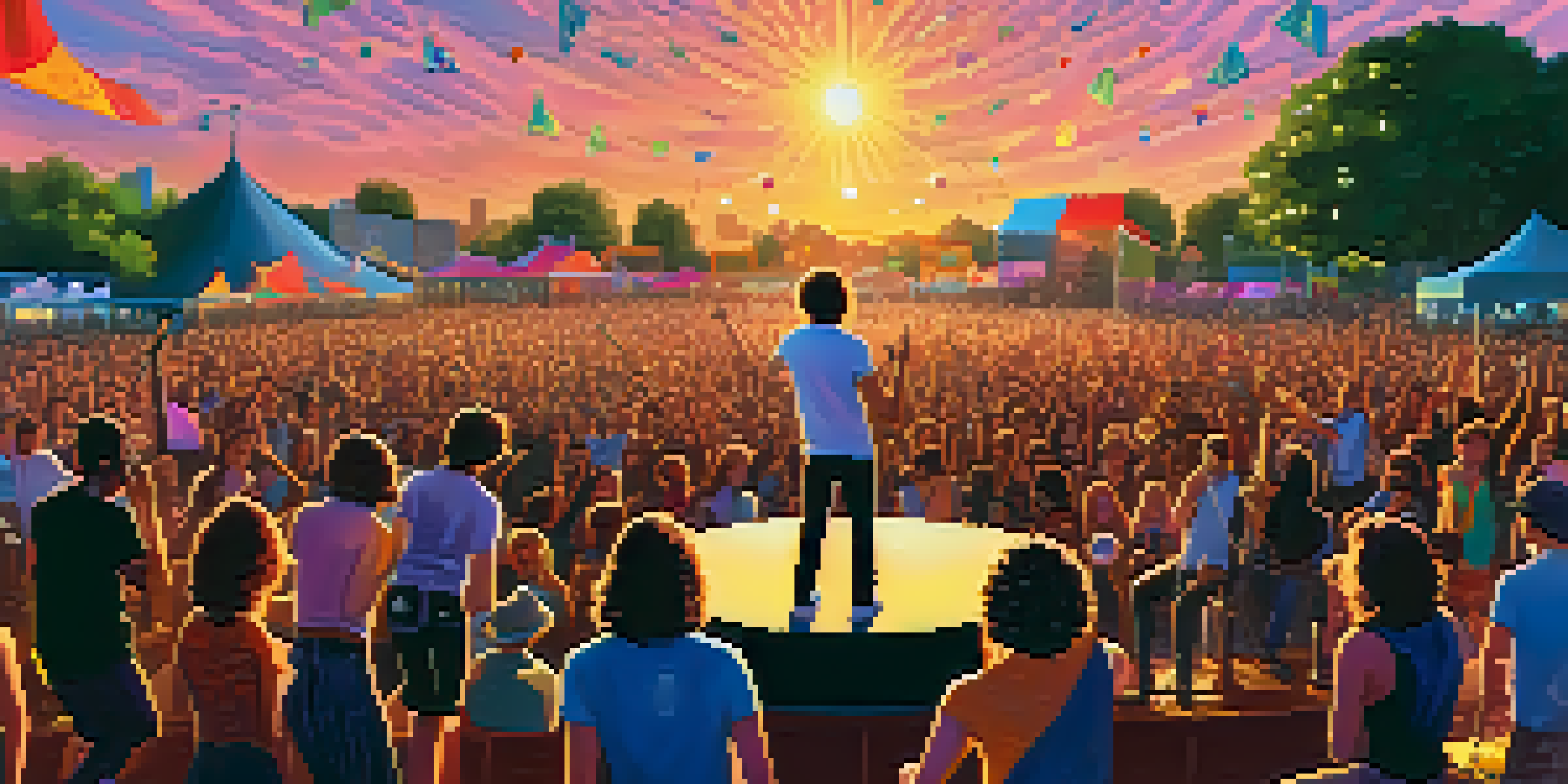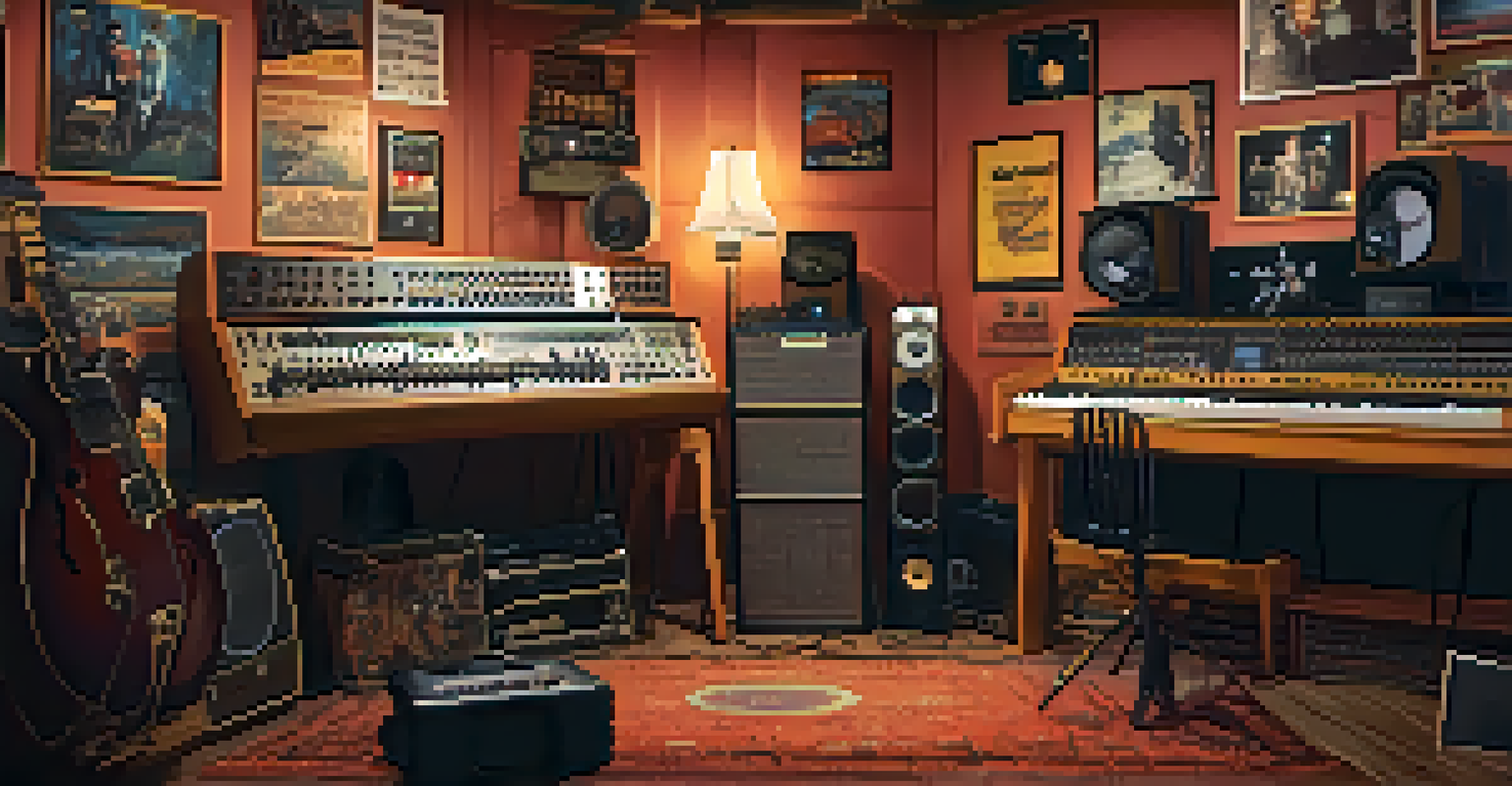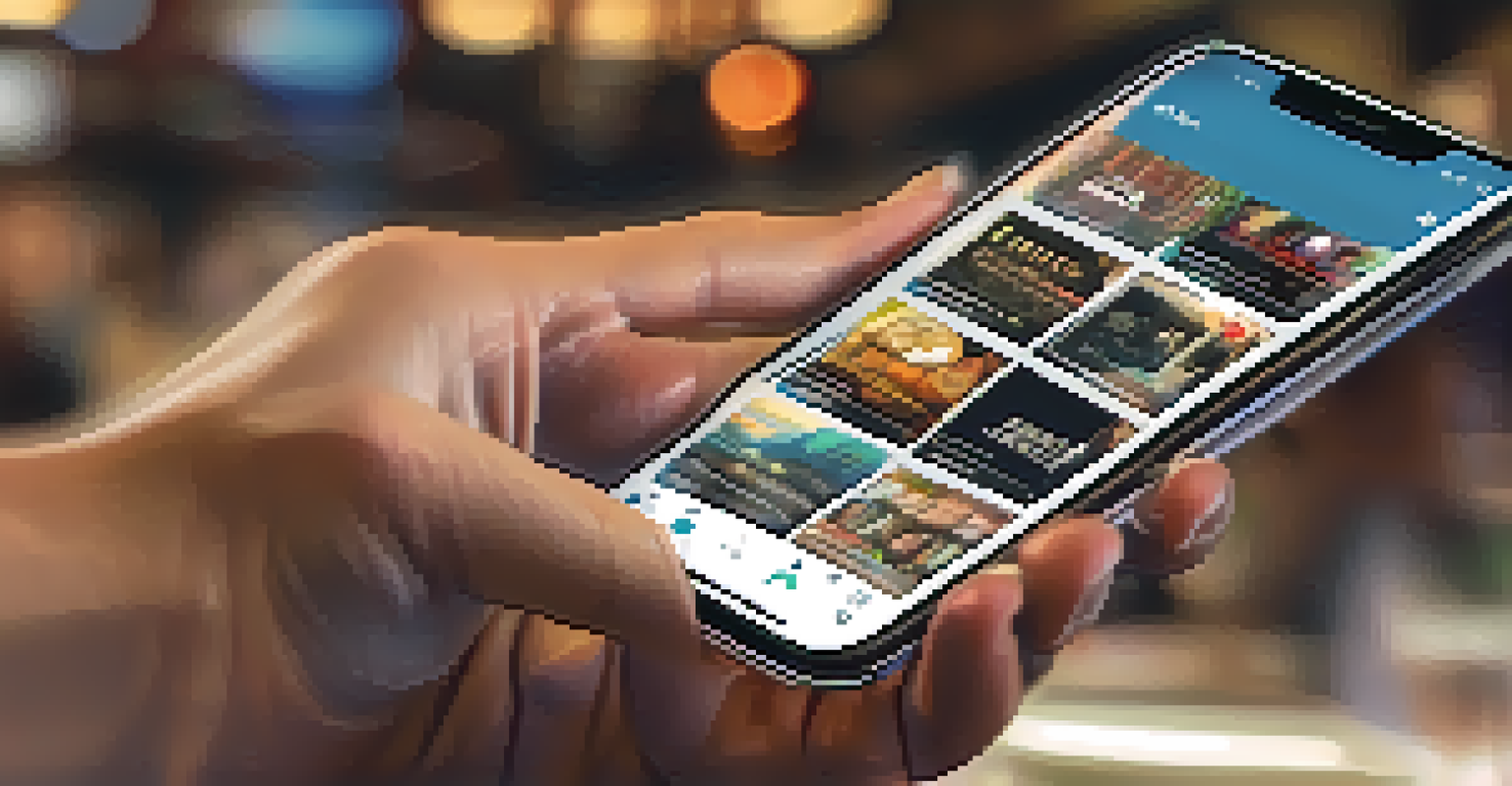The Rise of Indie Artists: Navigating the New Music Economy

Understanding the Indie Music Scene and Its Growth
The indie music scene has surged in popularity over the past decade, with artists gaining more control over their careers. Unlike traditional music labels, indie artists often operate independently, allowing for more creative freedom. This shift reflects a broader societal change where individuality and authenticity are highly valued, attracting listeners who crave unique sounds. The rise of digital platforms has been a game-changer, enabling artists to connect directly with fans and share their music without needing a major label.
Indie music is about taking risks and challenging the status quo, creating art that resonates with people on a personal level.
Platforms like Bandcamp and SoundCloud have democratized music distribution, making it easier for indie musicians to reach global audiences. With just a few clicks, an artist can upload a song and potentially reach thousands of listeners. This accessibility has encouraged a diverse range of genres and styles, allowing indie artists to experiment and innovate in ways that mainstream artists might not. As a result, the indie music scene has become a melting pot of creativity, showcasing talent from all corners of the globe.
Additionally, the rise of social media has played a crucial role in this growth. Artists can now engage with their fans through platforms like Instagram and TikTok, building a loyal following and promoting their work effectively. This two-way communication fosters a sense of community and connection that was harder to achieve in the past. As indie artists continue to harness the power of these tools, they are not just surviving but thriving in the new music economy.
The Role of Streaming Services in Indie Success
Streaming services have revolutionized how music is consumed, providing indie artists with unprecedented opportunities. Platforms like Spotify and Apple Music allow musicians to distribute their work widely without the backing of a major label. This shift means that talented artists can gain exposure and build their fanbase organically, often leading to lucrative opportunities and collaborations. However, while these platforms offer visibility, they also come with challenges regarding royalties and competition.

One of the significant advantages of streaming services is their ability to curate playlists that can catapult an indie artist to fame overnight. Getting featured on a popular playlist can lead to a surge in streams and followers, transforming an unknown artist into a sensation. For example, many artists have found success after being included in Spotify's 'Discover Weekly' or 'New Music Friday,' showcasing the power of algorithm-driven recommendations. This highlights the importance of marketing and understanding how to leverage these platforms effectively.
Indie Artists Gain Creative Freedom
The indie music scene has flourished as artists embrace independence, leading to unique sounds and a stronger connection with fans.
However, it's important to note that the streaming landscape is competitive, and not all artists see the same level of success. Many indie musicians still struggle to earn a living wage from streaming alone, as the payout per stream is often minimal. This reality has prompted artists to diversify their income sources, exploring merchandise sales, live performances, and crowdfunding. By embracing a multi-faceted approach, indie artists can navigate the complexities of the streaming economy while maintaining their artistic integrity.
Building a Strong Personal Brand as an Indie Artist
In the indie music world, a strong personal brand can set an artist apart from the crowd. Building a unique identity involves more than just creating great music; it requires thoughtful storytelling and engagement with fans. Artists often share their journeys, inspirations, and creative processes through social media, allowing fans to connect on a deeper level. This intimacy fosters loyalty and encourages fans to support their work in various ways, from sharing music to attending shows.
The future of music is about connecting with fans in a more authentic way, where artists can share their stories and journeys directly.
Moreover, having a consistent visual and thematic aesthetic helps reinforce an artist's brand. Whether it’s through album artwork, music videos, or stage presence, these visual elements communicate an artist's vibe and message. A well-crafted image can resonate with audiences and make the music more memorable. For instance, Billie Eilish’s distinct style has become synonymous with her music, making her a recognizable figure in the industry.
Additionally, indie artists often collaborate with other creators to expand their reach and enhance their brand. These partnerships can lead to cross-promotion, where fans of one artist discover another through shared projects. By collaborating with visual artists, influencers, or even other musicians, indie artists can tap into new audiences and create a vibrant community. This collaborative spirit not only enriches their work but also strengthens their position in the ever-evolving music landscape.
Crowdfunding: A Lifeline for Indie Musicians
Crowdfunding has emerged as a vital tool for indie artists looking to finance their projects without traditional funding. Platforms like Kickstarter and Patreon allow musicians to connect with fans directly, inviting them to support their creative endeavors. This model not only funds album production or tours but also fosters a sense of ownership among fans, who feel personally invested in the artist's journey. It’s a win-win scenario where artists gain financial backing, and fans receive exclusive perks in return.
One notable success story is Amanda Palmer, who famously raised over a million dollars for her album through Kickstarter. Her campaign exemplified how passionate fans can come together to support an artist’s vision, highlighting the power of community in the indie music space. This approach has encouraged more artists to explore crowdfunding as a viable option, further blurring the lines between creator and consumer. It’s about building relationships and creating shared experiences.
Streaming Services Offer New Paths
Platforms like Spotify enable indie musicians to reach wider audiences, though they must navigate challenges around royalties and competition.
However, crowdfunding is not without its challenges. Artists must effectively communicate their vision and engage their audience to succeed in these campaigns. This requires strategic planning and marketing efforts to ensure that potential backers understand the project’s value. Additionally, artists must deliver on their promises, as maintaining trust is crucial for future endeavors. When done right, crowdfunding can be a transformative experience, allowing artists to bring their creative visions to life while deepening their connection with fans.
Navigating Live Performances in a Digital World
Live performances have long been a cornerstone of an artist's career, but the landscape has changed dramatically in recent years. With the rise of digital platforms, artists now have the option to perform virtually, reaching audiences far beyond their local scene. Live streaming concerts on platforms like Twitch and Instagram Live allows indie musicians to showcase their talent without the constraints of physical venues. This flexibility has opened up new opportunities for exposure and engagement.
However, while virtual performances have their perks, they also come with their own set of challenges. Technical issues, lack of audience energy, and the difficulty of monetizing online shows can complicate the experience for artists. Many indie musicians are learning to adapt by incorporating interactive elements, such as Q&A sessions or fan requests, to enhance audience engagement. This evolution reflects a broader trend where artists must be versatile and innovative to thrive in an ever-changing environment.
Moreover, live performances remain essential for building a loyal fan base. Whether in-person or online, these events create memorable experiences that strengthen the bond between the artist and their audience. As restrictions continue to evolve, many indie artists are finding a hybrid approach to performances—combining live shows with virtual options. This strategy not only expands their reach but also allows for flexibility in engaging with fans, ensuring that they remain connected regardless of circumstances.
The Importance of Networking in the Indie Music Scene
Networking is a crucial element for indie artists trying to navigate the music industry. Building relationships with other musicians, producers, and industry professionals can open doors to new opportunities and collaborations. Attending local shows, music festivals, and workshops allows artists to connect with like-minded individuals who share their passion for music. These interactions can lead to valuable partnerships that enhance their careers and broaden their reach.
Social media platforms also serve as powerful networking tools, enabling artists to connect with peers and industry insiders worldwide. Engaging with others in the community can lead to fruitful collaborations and support systems that help artists grow. For example, sharing each other's work or promoting joint projects can amplify visibility for all involved. This sense of camaraderie is vital in an industry where competition can often feel overwhelming.
Crowdfunding Builds Artist-Fan Bonds
Crowdfunding platforms empower indie artists to finance projects while creating a sense of community and shared investment with their supporters.
Furthermore, networking extends beyond just fellow musicians; it includes journalists, bloggers, and influencers who can help amplify an artist's message. Building rapport with these individuals can lead to features, reviews, and increased exposure. Indie artists should be proactive in reaching out, attending events, and sharing their story to create authentic connections. By cultivating a strong network, artists can enhance their chances of success in an ever-evolving music landscape.
Looking Ahead: The Future of Indie Music
As the music industry continues to evolve, the future of indie music looks promising. With technology advancing and consumer preferences shifting, indie artists are well-positioned to adapt and thrive. The rise of artificial intelligence, for example, is changing how music is produced and consumed, opening doors for new creative possibilities. Artists are increasingly embracing these tools to enhance their work while maintaining their authentic voices.
Moreover, the growing interest in local and grassroots movements is encouraging fans to support indie artists directly. As listeners become more aware of the impact of their choices, many are choosing to invest in local talent and independent music scenes. This trend not only benefits artists financially but also fosters a sense of community and cultural richness. The future of indie music will likely see a continued emphasis on authenticity and connection.

Ultimately, the indie music landscape is a testament to resilience and creativity. As artists navigate the complexities of the new music economy, they are redefining success on their terms. By focusing on their unique voices and building genuine relationships with fans, indie artists will continue to push boundaries and inspire future generations. The rise of indie music is not just a trend; it represents a cultural shift that celebrates individuality and diversity in the arts.